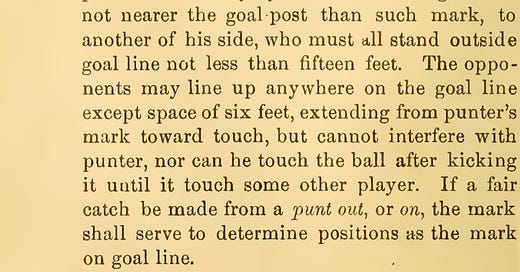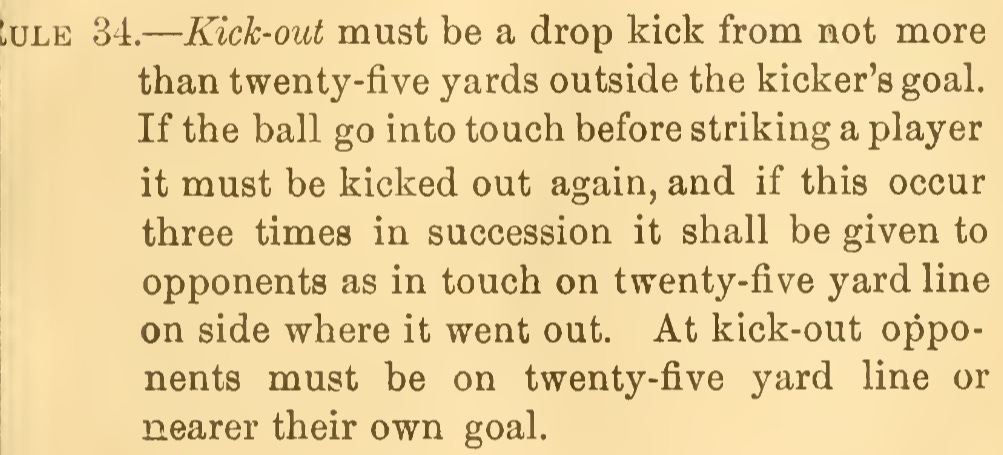The Kick Out
As I’ve noted before, one of the interesting aspects of football in the 19th century was the fact that the touchdown chiefly allowed the offensive team to have a free kick at goal. The “point after touchdown,” which became routine and commonplace, was once the entire point of the sport.
In the old days, the kick would be taken from a point parallel to the spot where the ball crossed the goal line. You could move back as far as you liked in hopes of improving the angle. The same rules were present in rugby at the time.
However, if the angle was impossible, there was an alternative. This was known as a “kick out.”
There were two variations of the “kick out.” One came after conceding a safety (a strategic move in those days), and the other came after scoring a touchdown from a difficult angle (“cannot score a goal” in the official rules).
The “kick out” after scoring a goal was also referred to as a “punt out” in the rules:
“Touch” in rule 7 refers to the out of bounds line. It’s still referred to as “touch” in soccer.
We’ll talk more about the concept of a “mark” from a fair catch as described here in a later post. As I’ve mentioned before, this “mark” is still a major component of Australian Rules Football.
Catching the “punt out” would enable the player to basically have a free shot at goal:
This rule seems to refer only to the “kick out” that happens after conceding a safety:
I have to admit that this is pretty vague to me. Let me know what you think in the comments.








